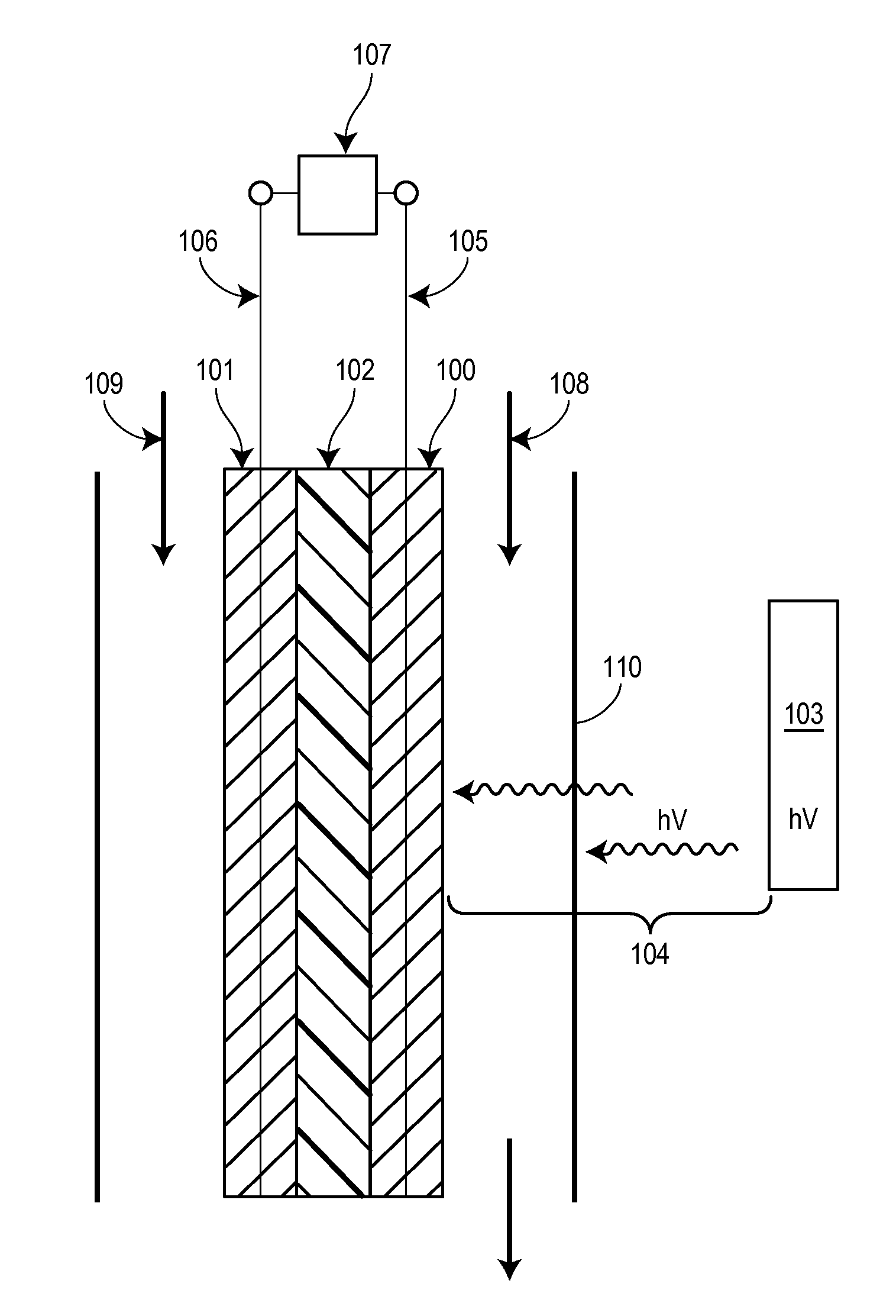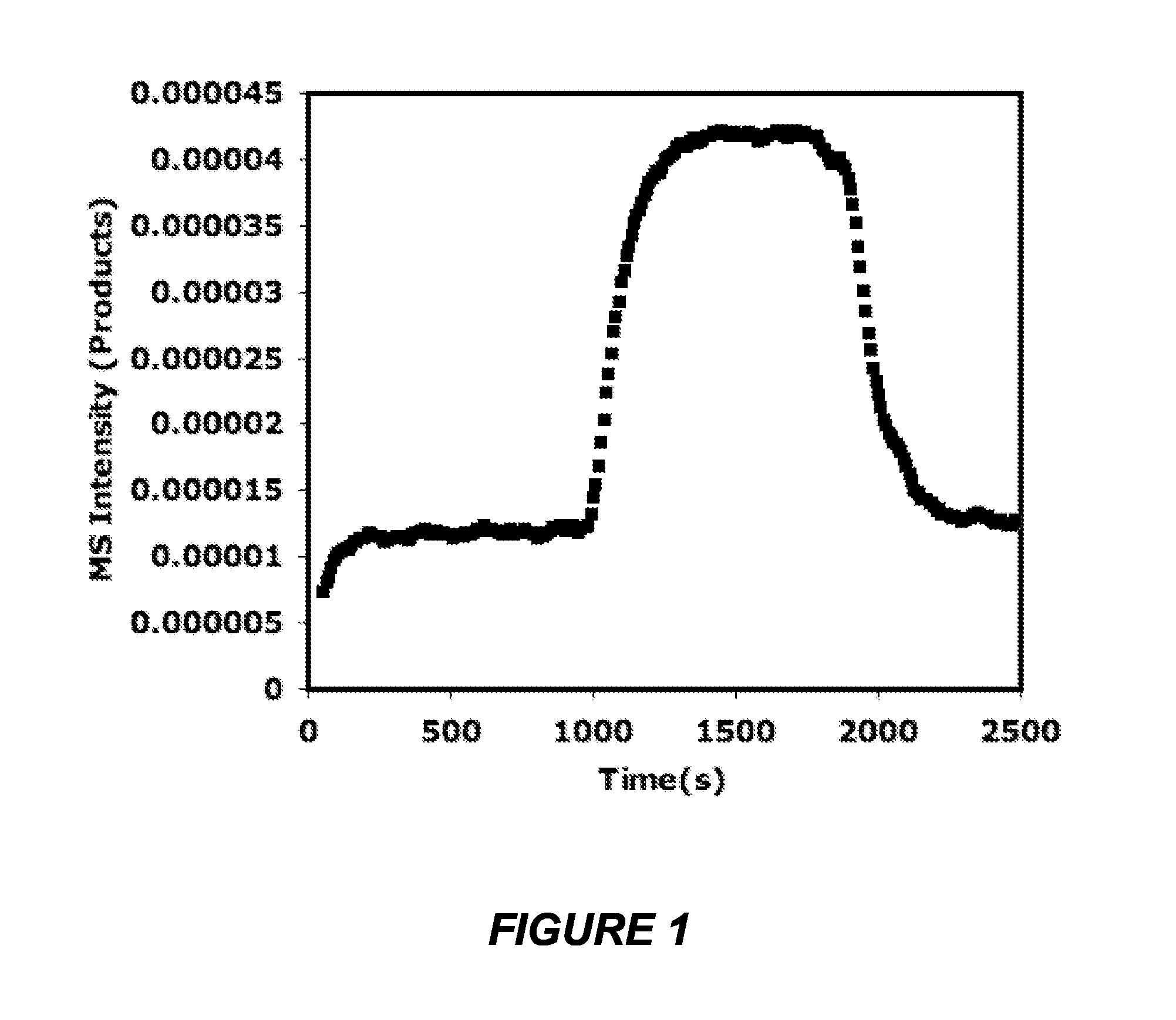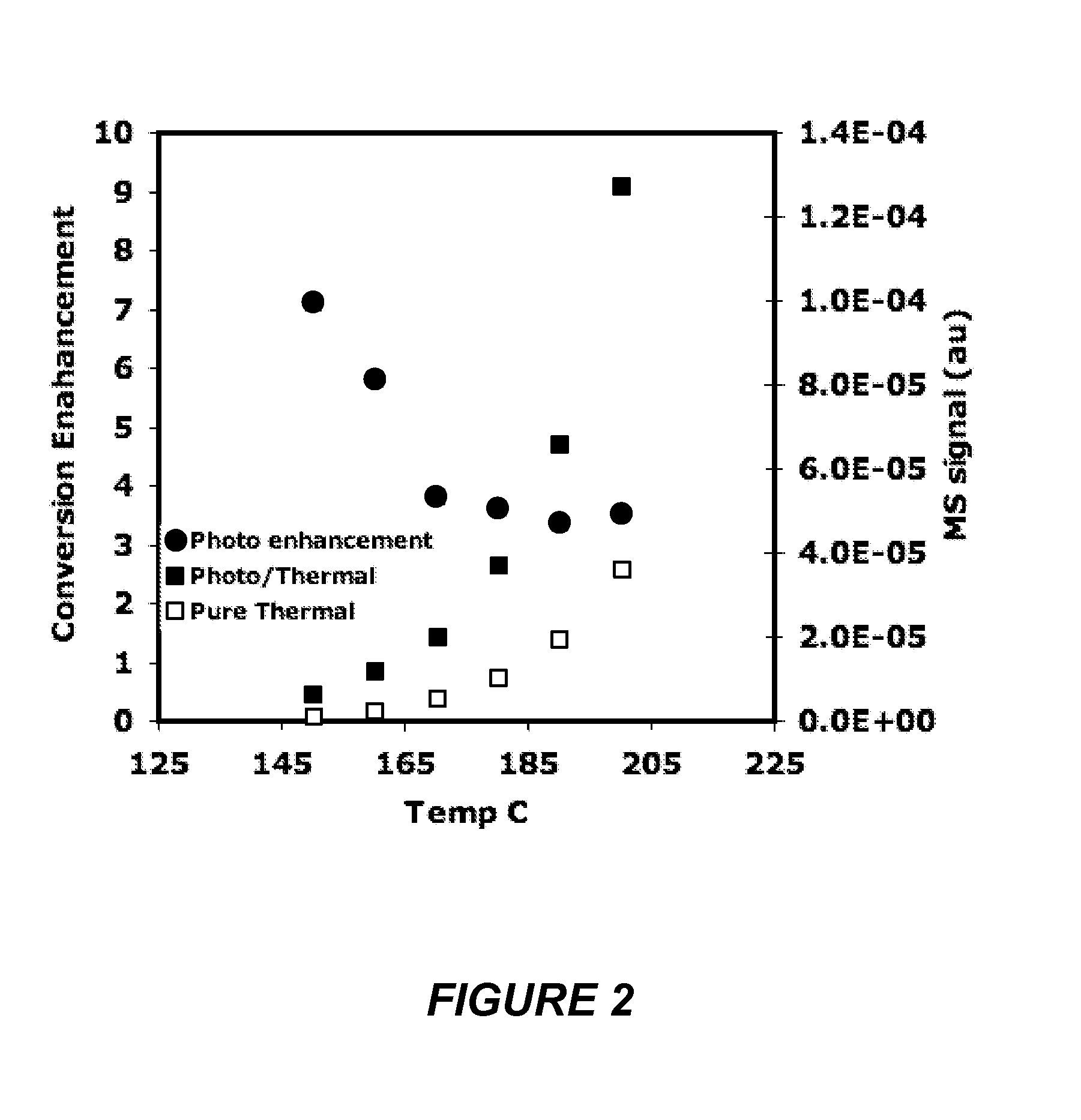Method and device using plasmon- resonating nanoparticles
a technology of plasmon resonance and nanoparticles, which is applied in the direction of physical/chemical process catalysts, cell components, metal/metal-oxide/metal-hydroxide catalysts, etc., can solve the problems of inherently difficult fine control, extremely energy-intensive thermochemical processes, etc., and achieve the effect of efficient us
- Summary
- Abstract
- Description
- Claims
- Application Information
AI Technical Summary
Benefits of technology
Problems solved by technology
Method used
Image
Examples
example 1
[0077]Initial temperature dependent photothermal experiments were conducted to examine the effect of visible light illumination on the activity and selectivity for the ethylene epoxidation reaction, CO oxidation reaction and NH3 oxidation reactions. At each temperature the catalyst was allowed 15 minutes to reach steady state under dark conditions followed by 15 minutes of visible light illumination, followed by 15 minutes in the dark to assure that the activity returned back to the initial dark baseline. The enhancement is calculated as the total rate under visible light illumination divided by the pure thermocatalytic rate with no illumination. In the case of ethylene epoxidation, the selectivity to ethylene oxide as well as the ethylene oxide yield as a function of temperature is also examined. The visible source used in all the experiments is a broad band white light source with an intensity of 50 mW / cm2 and a maximum output at 580 nm.
[0078]Ethylene epoxidation:
C2H4+½O2→C2H4O (E...
example 2
Intensity And Wavelength Dependence Of Ethylene Epoxidation Over Silver
Intensity Dependent Photothermal Tests
[0084]The mechanism of photocatalytic rate enhancement and the effect of source intensity on the photo-enhancement were examined by intensity dependent experiments. The intensity was varied by controlling the power input to the source but also could have been controlled by filters or other means. FIG. 25(b) indicates a direct (linear) correlation between the photocatalytic activity and the source intensity up to 250 mW / cm2. This linear dependence on source intensity is indicative of an electron driven process. FIG. 26 shows the rate of ethylene epoxidation over silver nanocrystals vs. incident photon intensity as a function of reactor temperature. Unlike FIG. 25(b), the high intensity photo-catalytic process is indicative of a multi-electron driven process. FIG. 26 shows the conversion efficiencies for ethylene to ethylene oxide as a function of temperature for different inci...
example 3
Isotopic Labeling Experiments
[0090]The mechanism of photocatalytic activity was examined by monitoring the effect of labeled 18O on the pure thermal and photothermal catalytic reactions. 18O was introduced for 10-15 minutes to allow the system to reach steady state and the quantity of 18O based products (m / z 46 and 48) were monitored. FIG. 25(c) shows the results of the effect of switching from 16O2 (at least 99% 16O2) to 18O2 (at least 99% 18O2) in the photo-thermal ethylene epoxidation with a silver catalyst; a 16% decrease in reaction rate. This comparison the isotopic effect for the analogous thermal process showed a 5% decrease in reaction rate when 18O2 was used.
[0091]We believe the enhancement mechanism is similar to one that has been previously found to play a role in femtosecond laser induced desorption / reaction experiments on metallic surfaces is the hot electron induced population of unpopulated adsorbate antibonding orbitals. Femtosecond laser induced photochemistry expe...
PUM
| Property | Measurement | Unit |
|---|---|---|
| temperature | aaaaa | aaaaa |
| temperatures | aaaaa | aaaaa |
| temperature | aaaaa | aaaaa |
Abstract
Description
Claims
Application Information
 Login to View More
Login to View More - R&D
- Intellectual Property
- Life Sciences
- Materials
- Tech Scout
- Unparalleled Data Quality
- Higher Quality Content
- 60% Fewer Hallucinations
Browse by: Latest US Patents, China's latest patents, Technical Efficacy Thesaurus, Application Domain, Technology Topic, Popular Technical Reports.
© 2025 PatSnap. All rights reserved.Legal|Privacy policy|Modern Slavery Act Transparency Statement|Sitemap|About US| Contact US: help@patsnap.com



